| LabGuy's World: Sony Half Inch
Pre-EIAJ VTR's
New Photos! 02. 01. 31 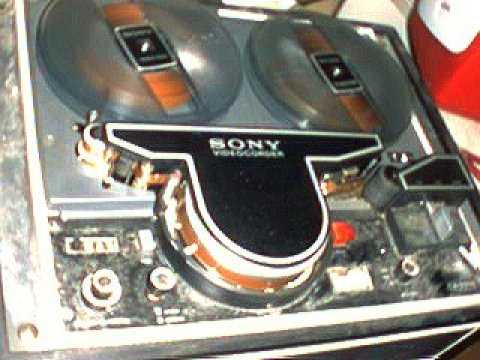 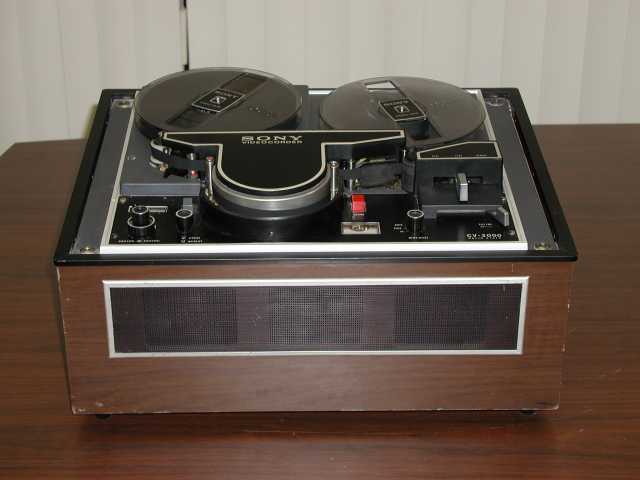 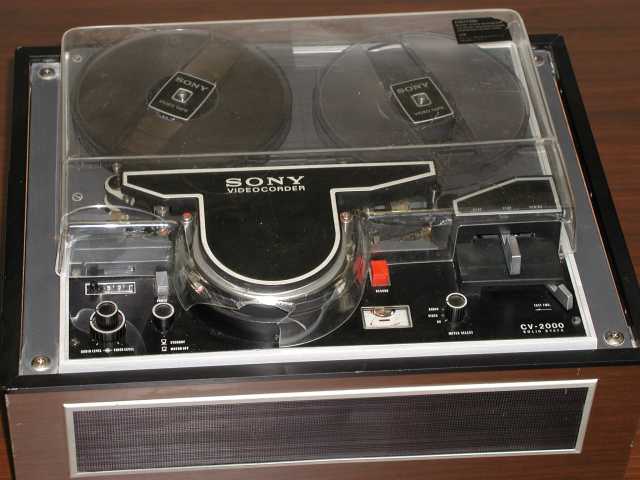
1965: CV-2000D - An early (working!) Sony consumer Videocorder. This is one of the very first affordable video tape recorders for consumers introduced by Sony in 1965 and is currently the oldest unit in my collection. Videocorder was a Sony trade name through out the 1960's and 70's. In Asia today, the term has stuck. Second and third photos were taken recently with a much better digital camera. The third photo shows ( what is left of ) the clear plastic cover that originally came as an optional accessory with these VTR's. It has seen better days! It could be used with the machine running and, besides providing dust protection, served to muffle some of the head buzz that is typical of these machines. The CV-2000(D) was preceded, in the market place, by the TCV-2010 which was introduced in September of 1965. The first photo is how it looked before I received it. Unfortunately, the original clear plastic dust cover (not shown), model number CVO-1, has all but disintegrated. It did keep the reels and the tape path clean over the eons, though the rest of the machine became covered in grime. The second photo is what it looks like now that 30 plus years of dust has been scrubbed off! This particular VTR is in A1 condition, too. It has both video heads intact, all controls are "snappy" and smooth and there is absolutely no evidence of abuse. It arrived with a very old roll of iron oxide tape instead of the much improved high energy chromium tape that came out only a couple of years later. As you can see, the tape is almost red in color instead of the more common black. I can't wait to try recording something! . New Info: 040328 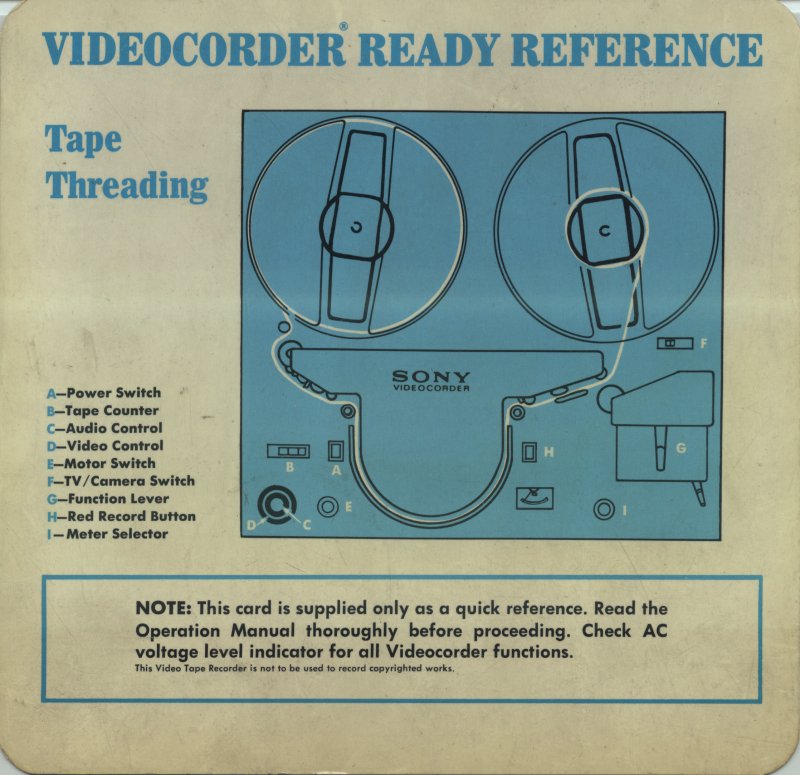 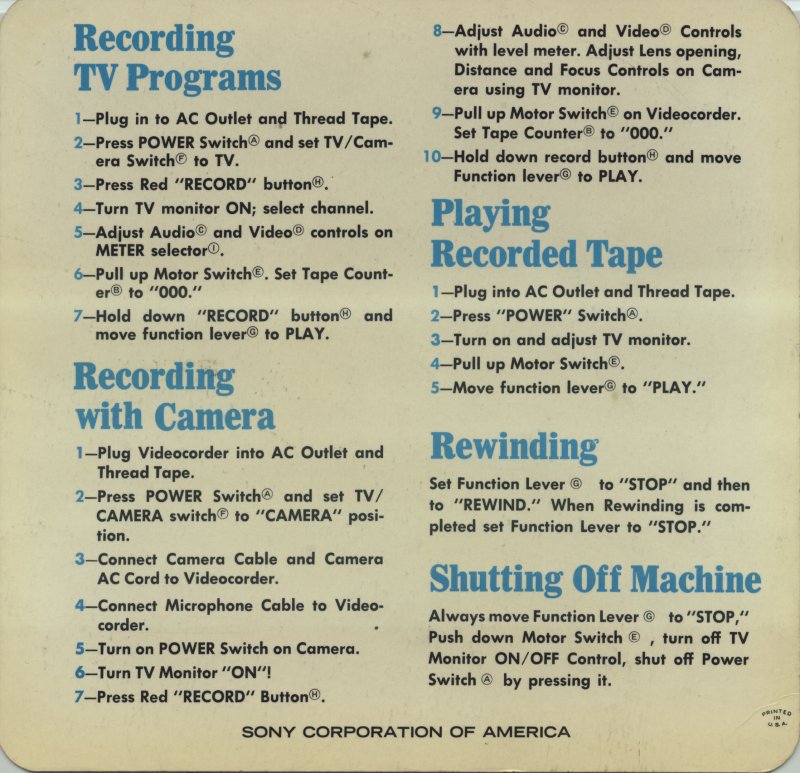
SONY CV-2000 QUICK REFERENCE CARD New information! 00.12.23 IT WORKS! After cleaning up the machine, I hooked it up to my handy Sony monitor and kicked it into PLAY. You know what? It worked!!! I found out that insurance salesman training was just as boring in the 1960's as it is today! I tried recording, but apparently that function doesn't work. LabGuy will have to dust off the old oscilloscope and get busy! More info as it comes in! . Hot Update! 03.05.08 AC MOTOR ISSUES - MUST READ! A recent issue with AC motors burning up in more than one CV-2000 that I know of, has inspired me to post the schematic diagrams of the CV-2000. This will provide a reference point on any discussion of the motor circuitry that is highly likely to follow. It is likely that the phasing capacitors, which are part of the main AC motor circuit, may have failed. I am unclear as to whether this will damage the motor or just make it simply not run. Be that as it may, here is the [COMPLETE SCHEMATIC OF THE CV-2000]. The file is 1 megabyte. This diagram pertains to all units with serial numbers from 5,001 to 10,401. There is a row of letters running across the top of the schematic and a column of numbers down the side. These can be used to refer to a particular zone on the page. For instance, the AC motor is in zone C-7 (lower left). Final Analysis: After consulting with my fellow collectors and some AC motor specialists, the failure of the AC phasing capacitors has been identified as the true problem. So, if you get your hands on ANY Sony CV-2xxx machines, DO NOT run them for any length of time until you replace the AC phasing capacitor in the motor circuit. You will do permanent damage to the windings of the motor if you ignore this warning. . News Flash! 03.05.12 Did you know that there was a PROFESSIONAL version of the CV-2000? It was called the SV-300. Read ALL of the information I have about the SV-300 [HERE]. The SV-300 had professional connectors, an included alignment tape(!) and a built in speaker for audio monitoring. The video inputs and outputs used the big PL-239 type connectors. PL-239s are the jack, which were also found on the rear of CB radios of that same era, are sometimes called UHF jacks. Audio connectors were also the professional 3 pin XLR type. This thing was fancy! Did Sony ever sell any? . Update Info: 040328 Sony did indeed manufacture and sell the SV-300. I recently received email from a gentleman who claims to have one. He hints that it will be offered up for sale soon. Stay tuned for that! .
A little bit of history: The CV in the model number stood for "Consumer Video" and would be a proprietary Sony standard format for half a decade. The "D" in the model number, of this unit, indicates that it has the dark walnut cabinet. The plain CV-2000 came in a more utilitarian business-like gray. The CV format was based upon 1/2" tape on a two head, alpha wrap helical scan system using the skip field method. The linear tape speed was 7.5 IPS, giving a respectable 1 hour running time with 2400' tapes on 7" reels. All of the CV format VTR's were interchange compatible among each other until the introduction of the EIAJ industry standard format AV series in the early 1970's. A specially modified video monitor was usually required to view the playback of the CV VTR's. The monitor was designed to tolerate the distortions introduced into the vertical sync interval by the skip field recording process. Some models included this monitor as a built in feature. In total, there were 10 models in the CV series. They were: CV-2000, TCV-2010, TCV-2020, CV-2100, TCV-2110, TCV-2120, CV-2200, DV-2400, CV-2600 and the CV-5100. The TCV's were chest models with a built in 9" TV receiver / video monitor, weighing in around 75 pounds! The DV-2400 was a miniaturized battery operated portapack with a camera for video taping on location. The CV-5100 was the only color model of the series. It never went into production. Only 25 prototype models were produced in about 1967 or 68 for the IRE trade show (now the IEEE). Right after the show, most of the 5100's were scrapped. If I am extremely lucky, we may see one of the CV-5100's in this collection one day..... . Update Info: 030616 This machine has been sold from my collection. I apologize to those of you who find this distressing. To put it another way, everyone has their price, and someone figured out mine. I won't say the exact price, but it amounts to 2500 per cent profit, not counting freight costs. I can't complain too much about that. To be fair, this CV-2000 has gone to good and appreciative home. . Update Info: 040328 A NEW(-ISH) CV-2000D FOR LABGUY'S WORLD! 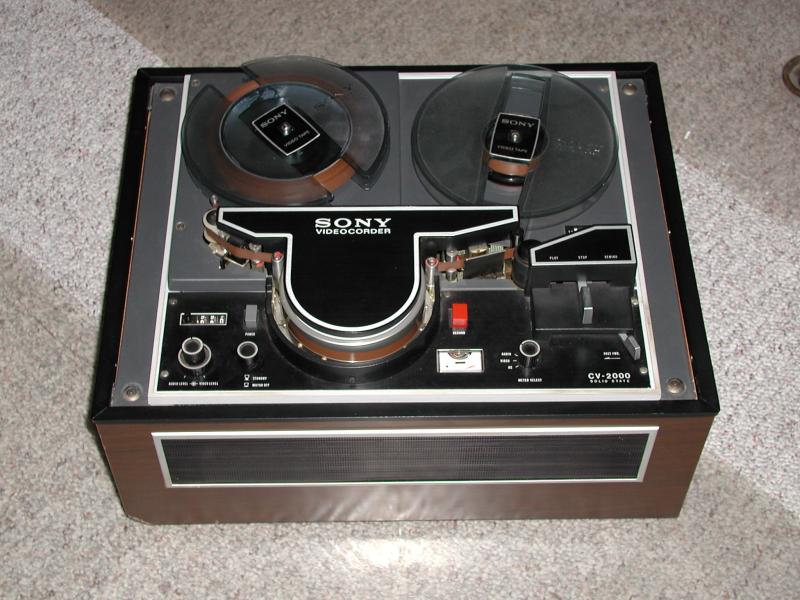 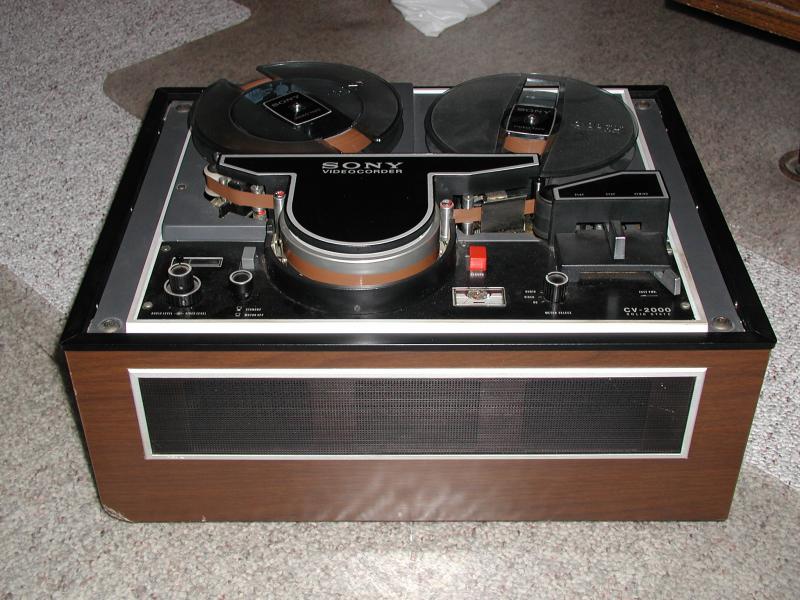 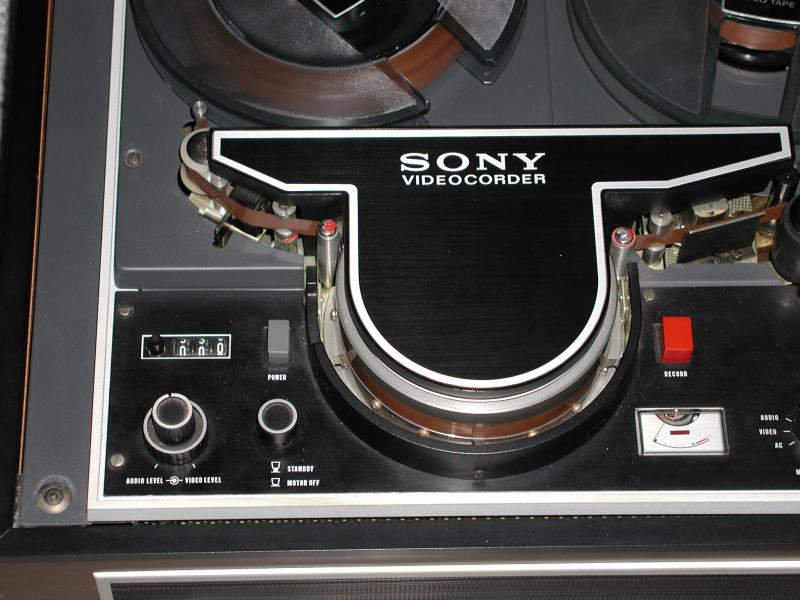 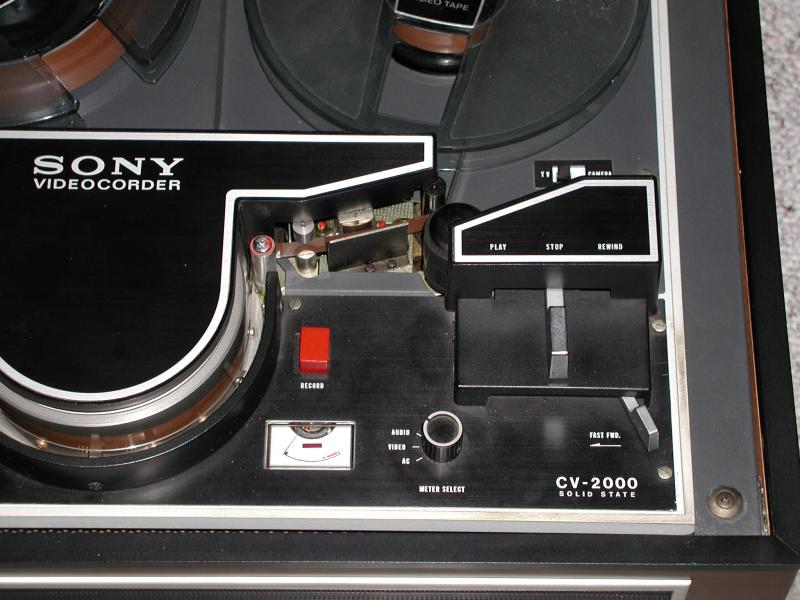 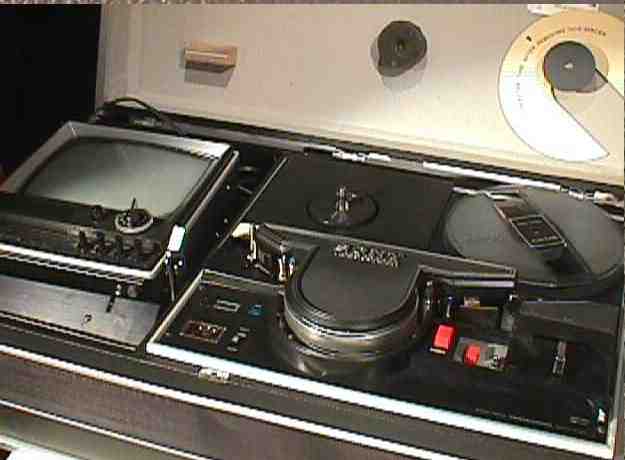 
1967: Sony TCV-2110 - Videocorder System. This is a complete CV format video system. It's is not much smaller than my Ampex VR-6200 1 inch machine! There are actually two of these systems in my museum collection. The TCV-2110 combines a model CV-2100 skip field VTR and a 9" TV receiver / monitor into a single, conveniently transportable unit. New Additions - 01/00! 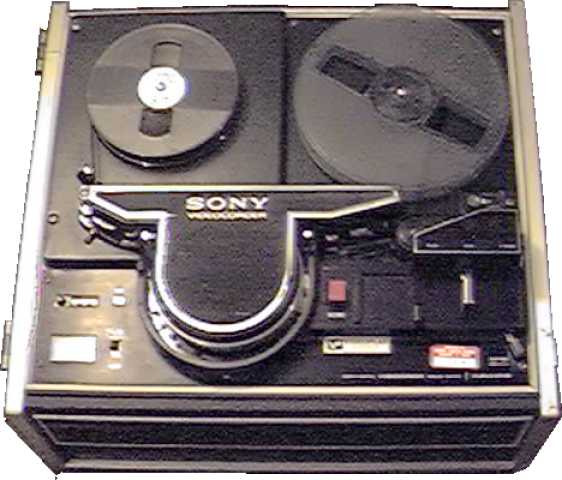 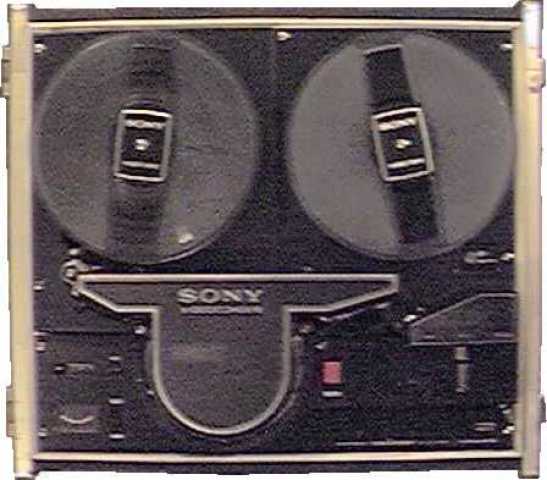
1967: Sony CV-2200 & CV-2200A - Editing & Duplicating Videocorders. These models bring dubbing
and editing facilities to the Sony skip field family of VTR's. The "A"
revision in the suffix of the second unit is just a slightly more improved
version of the CV-2200. All of the differences appear to be internal. So
the two models can be considered exactly the same from the users' stand
point.
New Photos! 02.0617  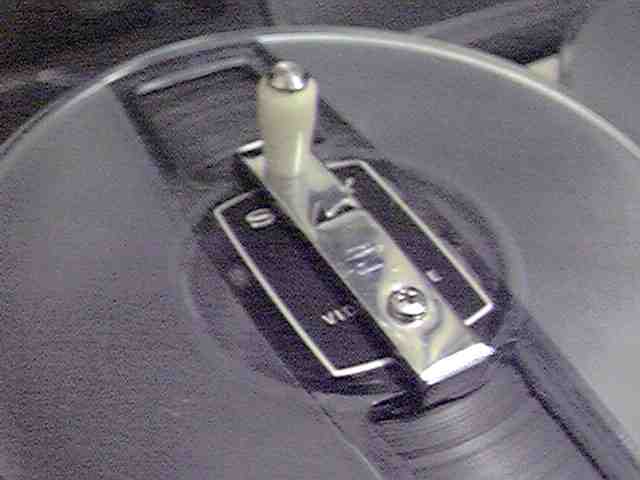 
1967: Sony Video Rover portapack VTR, manual rewinder and portable camera. The Sony "Video Rover", model DV-2400, was the very first portable video tape recorder available to the general public. The DV-2400 portapack VTR and DVC-2400 vidicon camera, was introduced in 1967. This system was strictly record only. Video Rover recordings could be replayed on any of the CV series skip field VTR's. Recording time was 20 minutes, using a 4-1/2 inch reel of tape. Sony went all out to make this machine light and compact, eliminating every single function not directly related to recording the video onto the tape. Functionality is so spartan, that even the tape rewind function was not incorporated. Sony recommended that the tapes be rewound on your CV series VTR. If you absolutely had to rewind the tape on the Rover, a small hand crank was included. The crank was stored conveniently inside the VTR's hinged top cover. The hand crank, in its storage clip inside the lid of the VTR, is visible in the first photo. The second photo is the "Rewinding with the Oldies!" position. Third photo is the DVC-2400 matching portapack camera. NEEDED: Service and or operators' manuals for this system. New Addition and Photos! 01.08.03 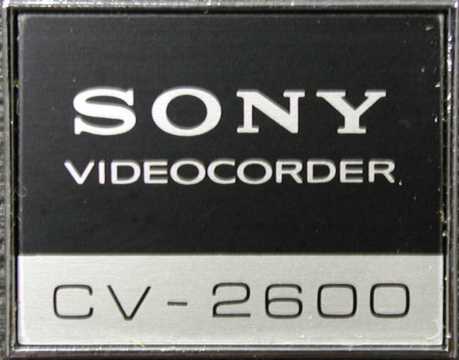 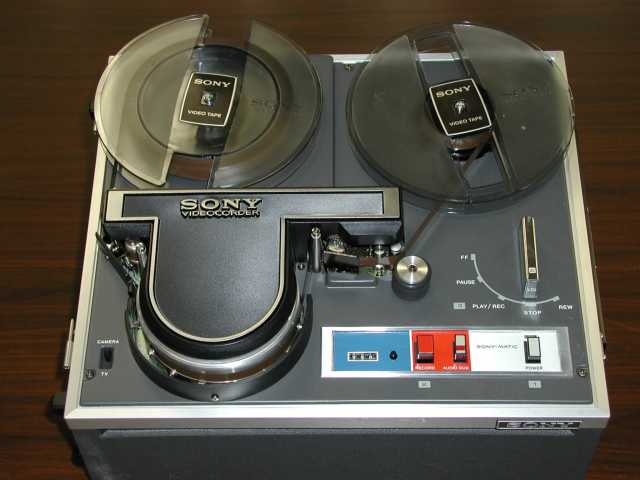 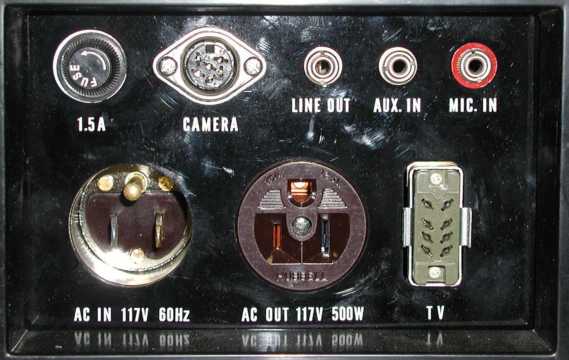 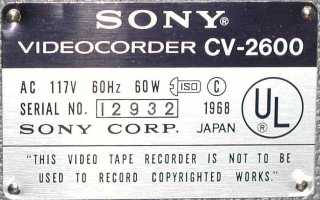 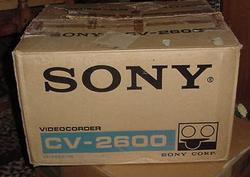
1968: Sony CV-2600 - Simplified 1/2" Skip Field Videocorder! This model is the last
of the CV series from Sony. Notice it's resemblance to the AV-3600 shown
on the next page. The CV-2600 and the AV-3600 were the "cross over" point
from skip field recording machines to the more "advanced", full field recording,
AV series machines. The mechanical technology of these later machine types
was fully mature in the CV-2600. It has a single control lever for all
transport functions, simple to use fully automatic audio & video level
controls and a lighter, more transportable construction. The only shortcoming
of this model, and all of the CV-2000 series, is the total lack of a playback
tracking control! Most experienced CV-2xxx users have told me that they
tweaked the drum entrance and exit guides to achieve proper interchange!
Click here to: Go to the Next Exhibit: Other Half Inch Pre-EIAJ VTR's Return to the Exhibit Index Return to The Top of LabGuy's World Last updated: April 1, 2004 |
